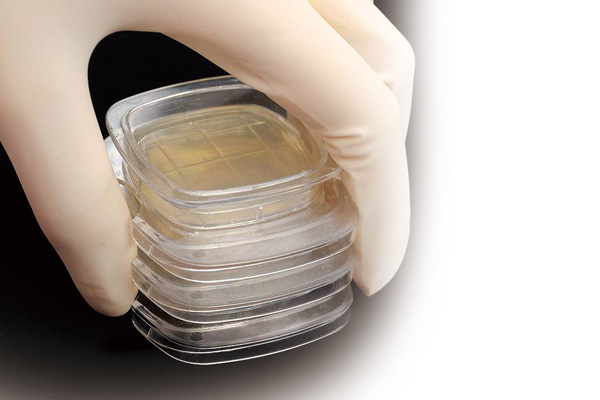Several Types of Microbial Culture Media
(2023年11月30日)https://www.elexbio.com/several-types-of-microbial-culture-media.html
Different types of microbial culture:
1. According to the composition, simple culture medium can be divided into three types: synthetic medium, natural medium and semi synthetic medium.
(1) Synthetic medium. The components of the synthetic media for tissue culture are all known chemicals. The chemical composition of this medium is clear, the composition is accurate, the repeatability is strong, but the price is expensive, and the growth of microorganisms in this medium is slow. For example, Gao's No.1 synthetic medium and Czapek medium belongs to this type.
(2) Natural medium. It is made of natural substances, such as steamed potato and common beef soup. The former is used to cultivate mold and the latter is used to cultivate bacteria. The chemical composition of this kind of culture medium is very unsteady and difficult to determine, but it is easy to prepare, rich in nutrition and good in culture effect, so it is often used.
(3) Semisynthetic medium. On the basis of natural organic matter, some inorganic salts with known components are added properly, or some natural components are added on the basis of synthetic medium. This kind of medium can more effectively meet the needs of microorganisms for nutrients.
2. According to the physical state, the bacterial culture media can be divided into three types: solid medium, liquid medium and semi-solid medium.
(1) Solid medium. Coagulant is added to the culture medium, including agar, gelatin, silica gel, etc. The solid medium is often used in the separation, identification, counting and preservation of microorganisms. It is used for microorganism separation, identification and counting. As shown in the figure, microorganisms are separated into colonies and lichens.
(2) Semi-solid medium. A small amount of coagulant is added to the liquid medium to form a semi-solid state. It can be used to observe the movement of bacteria, identify bacteria and determine the titer of phage. It is used to observe the movement characteristics of microorganisms.
(3) Liquid medium. No coagulant was added to the liquid medium. The composition of the medium is even, and the microorganism can fully contact and use the nutrients in the medium, which is suitable for physiological research. Because of the high fermentation rate and convenient operation, it is also commonly used in the fermentation industry. It is also sed to observe the growth of microorganisms.
3. According to the types of microorganisms, bacterial culture media can be divided into four types: bacterial culture media, actinomycete culture media, yeast culture media and mold culture media.
(1) The commonly used media semi solid are nutrient broth and nutrient agar.
(2) The commonly used actinomycete culture media is gauze No.1 .
(3) The commonly used yeast culture medium includes potato sucrose culture medium and malt juice culture medium.
(4) The commonly used mold culture media are potato sucrose culture medium, bean sprout juice sucrose (or glucose, glucose is more expensive) agar culture medium and chasser culture medium.
4. According to their use, synthetic medium microbiology can be divided into: basic medium, identification medium, selective medium and enrichment medium.
(1) Basic medium. It is a medium containing the basic nutrients for the growth and reproduction of general microorganisms.
(2) Enrichment medium. It is a medium made by adding blood, serum, animal and plant tissue extracts. It is used to cultivate some microorganisms with strict requirements.
(3) Selective medium. It is to add special nutrients or chemicals into the ordinary culture medium to inhibit the growth of unnecessary microorganisms, which is conducive to the growth of required microorganisms. It is used to separate a certain or a certain kind of microorganism from a mixed microbial population.
(4) Identification medium. It is to add some reagents or chemicals into the culture medium, so that some changes will occur after culture, so as to distinguish different types of microorganisms.
For more about swab sampler and microbiology kit, Contact us.

- このできごとのURL:



コメント